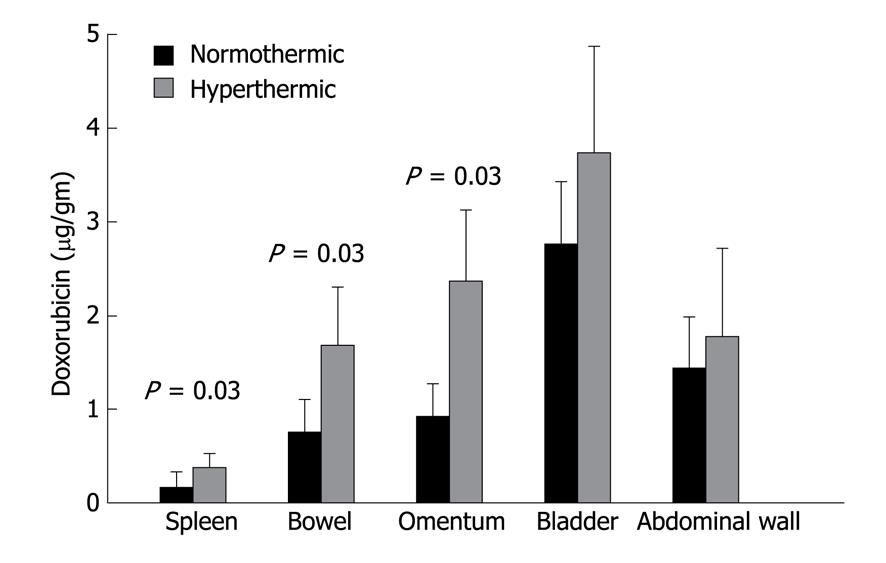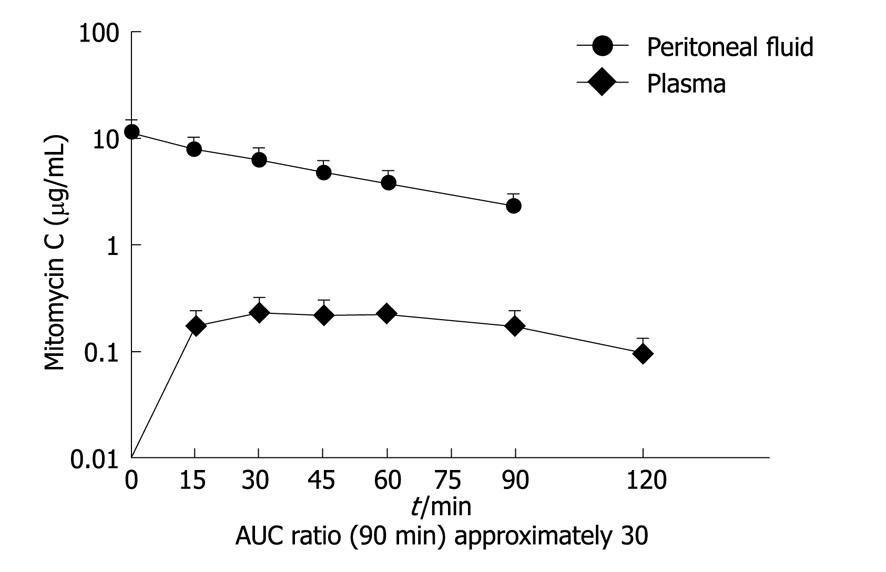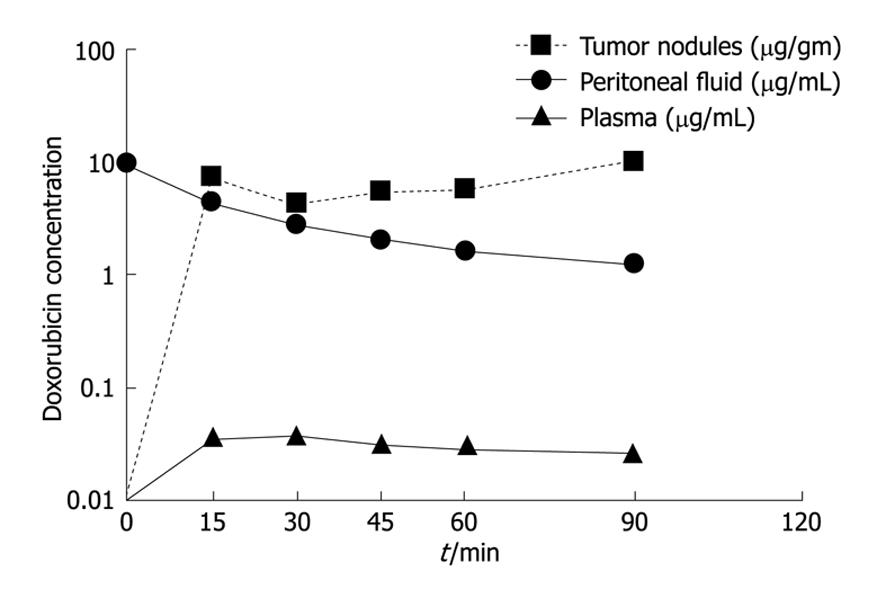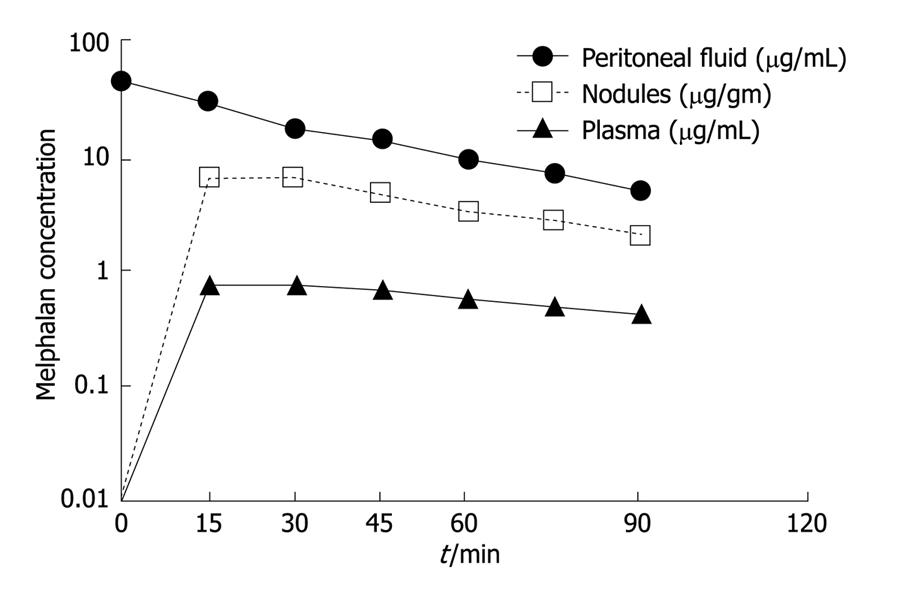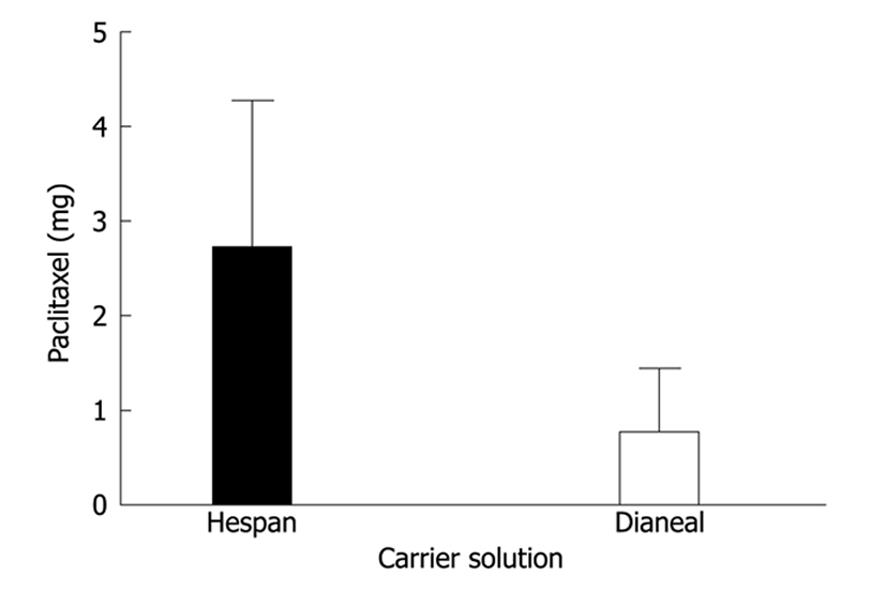Copyright
©2010 Baishideng.
World J Gastrointest Oncol. Feb 15, 2010; 2(2): 109-116
Published online Feb 15, 2010. doi: 10.4251/wjgo.v2.i2.109
Published online Feb 15, 2010. doi: 10.4251/wjgo.v2.i2.109
Figure 1 Tumor growth time with intraperitoneal chemotherapy alone vs heated intraperitoneal chemotherapy at 41.
5°C. Tumor growth is delayed in heated intraperitoneal chemotherapy.
Figure 2 Heat increases the penetration of intraperitoneal chemotherapy into tissues.
Modified from reference[53].
Figure 3 HIIC with MMC.
The area under the curve ratio of intraperitoneal concentration over plasma concentration times time of heated intraoperative intraperitoneal mitomycin C is approximately 30. HIIC: Heated intraoperative intraperitoneal chemotherapy.
Figure 4 Absorption of mitomycin C from a hyperthermic solution containing 2, 4 or 6 L of 1.
5% dextrose peritoneal dialysis solution. Cited form reference[27].
Figure 5 Pharmacokinetic profile of heated intraoperative intraperitoneal doxorubicin showing that the doxorubicin concentration in the tumor nodule is higher than that in the peritoneal fluid.
Figure 6 The area under the curve ratio of intraperitoneal concentration over plasma concentration times time of heated intraoperative intraperitoneal cisplatin is approximately 10.
Figure 7 Pharmackinetics of HIIC with melphalan.
Pharmacokinetic profile of melphalan given intraperitoneally at 70 mg/m2 in 3 L of 1.5% dextrose peritoneal dialysis solution at 42°C for 90 min. Pharmacokinetic studies showed that the drug concentration in the tumor nodules was approximately 30% of the intraperitoneal concentration and 10 times the plasma concentration.
Figure 8 Mean total drug remaining in peritoneal cavity at 23 h.
Hypertonic carrier solutions maintain the artificial ascites and paclitaxel concentrations, during early postoperative intraperitoneal paclitaxel instillation. Cite from reference[45].
- Citation: Yan TD, Cao CQ, Munkholm-Larsen S. A pharmacological review on intraperitoneal chemotherapy for peritoneal malignancy. World J Gastrointest Oncol 2010; 2(2): 109-116
- URL: https://www.wjgnet.com/1948-5204/full/v2/i2/109.htm
- DOI: https://dx.doi.org/10.4251/wjgo.v2.i2.109










